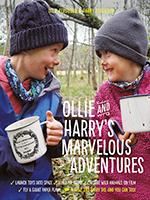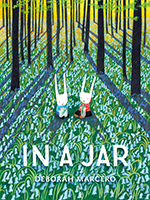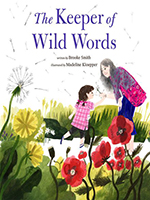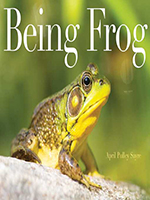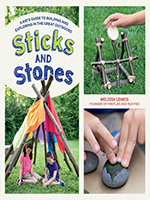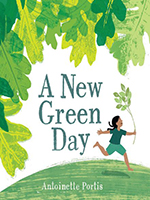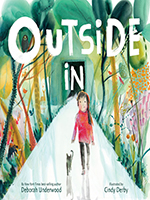Finding adventure in your own backyard
Posted on May 15, 2020 at 6:00 am
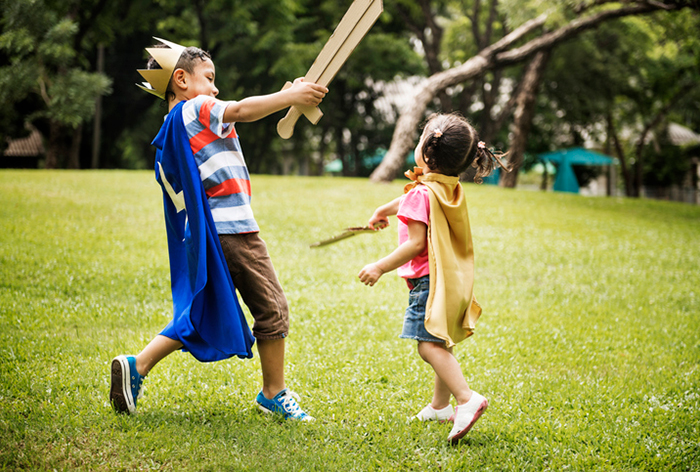
By Sheri Boggs
I live on a street with several young families, and during the governor’s Stay Home Stay Healthy order, I’ve really enjoyed walking my dogs along brightly chalked hopscotch games, seeing bubbles floating in the air, and marveling at the intricate fairy garden and pebble river one family made in their parking strip.
I loved doing stuff like this when I was young, imagining miniature worlds in our neighbor’s chaotic cottage garden and making bird feeders as a Camp Fire girl. I’m delighted to see new generations of kids still making and discovering and playing in their yards and neighborhoods.
Inspired by my neighborhood walks and childhood memories, I’m sharing a few selected books from the Backyard Adventure booklist on OverDrive. Some books are new, some are older, and all are full of fun outdoor activities and share an appreciation for nature.
I hope these inspire your backyard, front yard, and neighborhood adventures!
Ollie and Harry’s Marvelous Adventures, by Ollie Ferguson and Harry Ferguson
You might already be familiar with Ollie and Harry Ferguson, even if you’re not a follower of their Facebook page, The Days Are Just Packed. In the past three years, they’ve launched LEGO astronauts 20 miles above the earth with the help of a high-altitude weather balloon and a GoPro camera, they’ve sailed a Playmobil pirate ship from their home in Scotland to the Caribbean, and they’ve built a giant catapult capable of hurling fruit 60 feet away.
In Ollie and Harry’s Marvelous Adventures,the Scottish brothers share how they pulled off their feats as well as their family’s goal of accomplishing 500 magnificent adventures by the time the boys turn 18. My only reservation about the book is that I wish it opened with the more affordable, easy-to-execute adventures rather than the showy-but-technology-dependent astronaut and pirate ship adventures. Still, this book is a fantastic example of real-life engineering exercises and a family that’s committed to serious fun. (Ages 9–12)
In a Jar, by Deborah Marcero
A small, curious rabbit named Llewellyn collects ordinary-but-magical things in jars. He wanders the birch woods near his home in search of feathers, buttercups, and heart-shaped stones, and later, the jars remind him of his adventures. One day he meets Evelyn, who is also a small, curious rabbit, and together they scoop up marvelous moments and experiences and save them to remember later. But what will they do when fall comes and Evelyn’s family has to move? This gorgeous, imaginative picture book is perfect for these times, embracing friendship, loss, and remembrance against a backdrop of bluebells and cherry-pink sunsets. (Ages 3–7)
The Keeper of Wild Words, by Brooke Smith
When Brook visits her grandmother, Mimi, she finds her struggling with a writing project. Mimi explains that words disappear “if we don’t share them when we talk, write them in our stories, read them in our books.” Mimi shows Brook a list of words that they need to go find, immediately. They set out in search of apricots, minnows, ferns, violets, wrens, and discover starlings and Brook’s namesake, a brook. This gentle forest expedition concludes with a note from the author, who wrote the book in response to reading an article about how so many beautiful nature words were being removed from the Oxford Junior Dictionary in favor of less lovely words such as “database,” “conflict,” “drought,” and “vandalism.” (Ages 5–8)
Being Frog, by April Pulley Sayre
Ask any of our early learning librarians and they will happily extol the virtues of April Pulley Sayre’s nonfiction picture books. They are filled with stunning photography and simple, evocative language. Sayre’s books are fantastic for both learning and storytime. In Being Frog, Sayre explains that, “a frog is a being. It is watching. It is seeing.”
Her language is full of intriguing verbs and satisfying sounds (“Now it suns. It cave-spelunks. A green frog calls with glunk-glunk -glunks.”), and her photography is so close up you can almost smell the pond water. Sayre even encourages the reader to think about a frog’s existential questions, wondering if it remembers being a tadpole, if its days pass quickly or slowly, and if it ponders life while sitting quietly like the Buddha. (Ages 3–8)
Sticks and Stones: A Kid’s Guide to Building and Exploring in the Great Outdoors, by Melissa Lennig
This book is approachable (a bit more than Ollie and Harry’s Marvelous Adventures) with ideas for STEM-friendly nature projects that often just use materials you can find in your own yard and a handful of inexpensive art or hardware supplies. I especially like this title for how it adds an artistic element to a lot of the projects (painting the frame of the “Bug Hotel” and making a fort with sides that are also weaving looms). Other projects are completely nature based and don’t require additional supplies, including Stone Cairns and Land Art. (Ages 8–11)
A New Green Day, by Antoinette Portis
This poetic, nature-inspired title is a bit like the book version of Hasbro’s classic game Guess Who? and would be a great addition to nature-themed storytimes and enjoyed one on one. From dawn to nighttime, various creatures, weather phenomena, and sky objects invite the reader to guess what they are, for instance, “I scribble on the walk in glistening ink. Read all about my nighttime travels” is revealed to be a snail. “I’m a chorus of a million tiny voices. Come splash in my song,” is revealed to be the rain. Portis brings to life the sights and sounds of a rapidly changing summer day that dissolves in the “shiny buttons” of the night sky. (Ages 3–7)
Outside in, by Deborah Underwood
“We were once part of outside and outside was part of us” begins this introspective story where a small girl faces a day inside. But outside is persistent and loving, sending reminders of itself with the sunset and shadows that filter in through the windows, with the chirps we hear through closed windows, and with the earth we can sometimes smell when it rains. Outside is inside in the rivers that enter our homes through plumbing, in the plants that become fibers for our clothes, and in the wood that becomes our furniture. This reassuring tale offers lots of opportunities to count all the ways nature is all around us, even when we feel we can’t be out in it. (Ages 4–7)

Tags: adventures, booklist, books, digital, early learner, early learning, fiction, kids, nonfiction, outdoors, parents, reading, storytime

